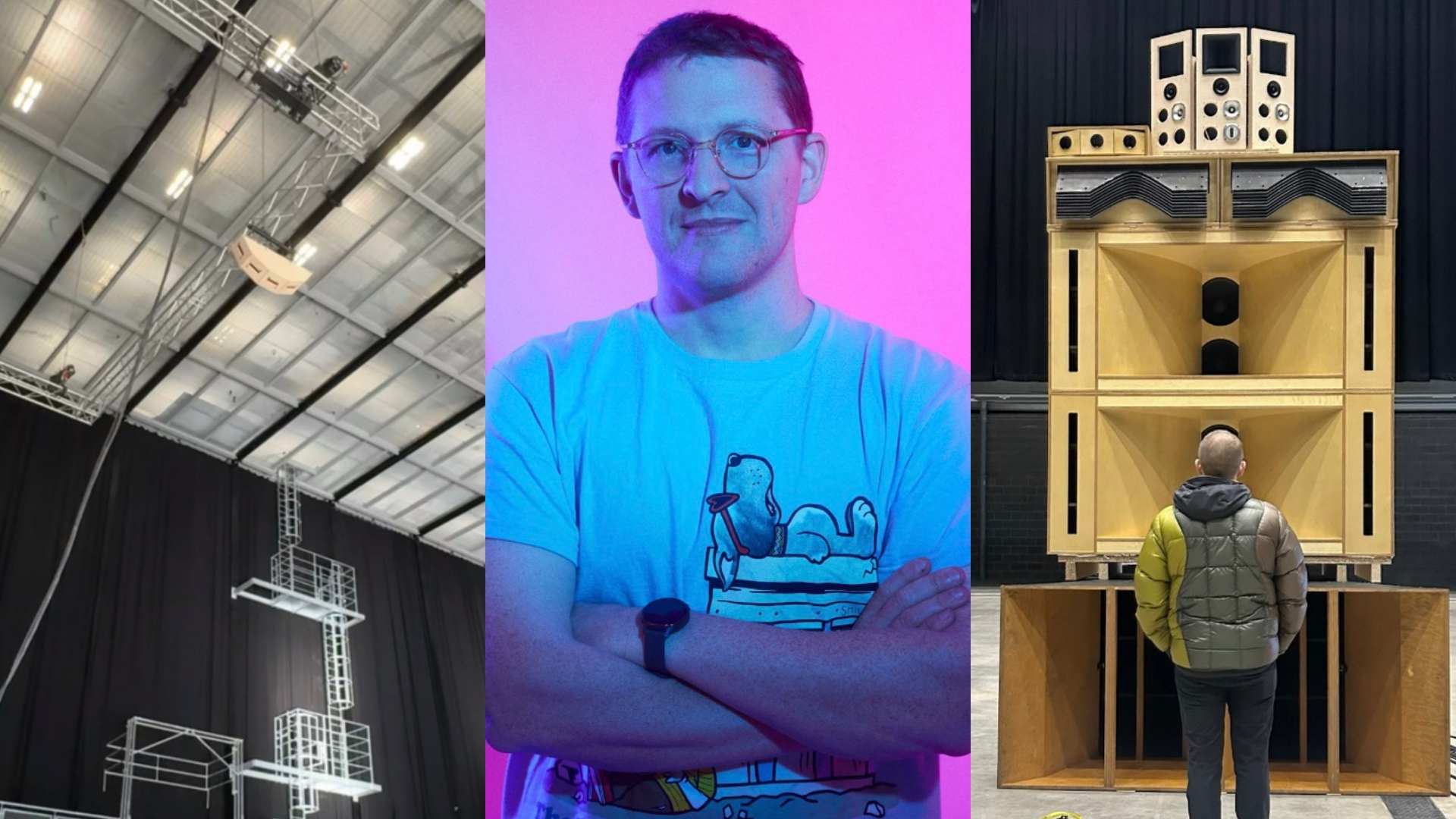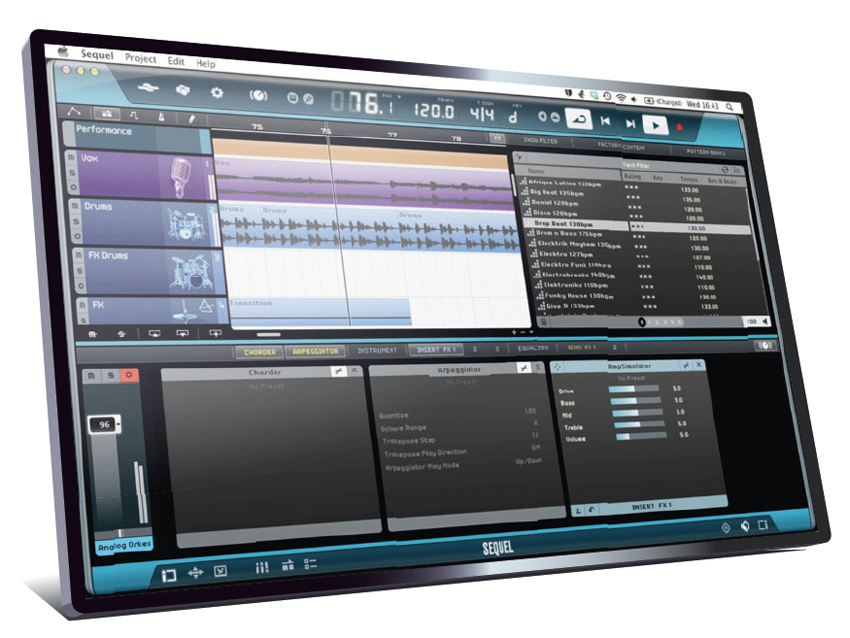MusicRadar Verdict
Version 3 makes Sequel an even better deal, with a simple workflow and plenty of great features.
Pros
- +
Production software aimed at beginners. Huge collection of loops, sounds and samples. Supports third-party VST3 plug-ins.
Cons
- -
Cubase Essentials may be a better option at a similar price.
MusicRadar's got your back
Since its launch in 2007, Sequel has inexplicably flown under many people's radar. Steinberg has more experience than anyone when it comes to developing music software, so it's surprising that their entry-level DAW is often overlooked.
With Sequel, the German company aim to offer a complete production package with an emphasis on loop-based composition and user-friendly features. The software isn't intended to convert users of more expensive DAWs like Cubase, Logic or Pro Tools, but provides strong competition for popular entry-level options such as GarageBand.
With the latest round of updates, it's time we took this little program a lot more seriously.
Entry level
Steinberg is most famous for Cubase, one of the most popular pieces of music software ever made. Sequel is a cheaper, more basic offering aimed at newcomers to computer music.
The software's layout and features are tailored to a beginner's needs, while also offering a slightly different workflow to the more traditional approach found in Cubase.
Most notably, Sequel places a major emphasis on audio loops and samples. Steinberg promises that you'll be making tracks within a few minutes even without any musical experience. Sure enough, dragging and dropping clips from the integrated MediaBay allows basic compositions to be created with ease.
The full installation includes a selection of over 5,000 loops and samples as standard, while registering the software online makes another 500 available for free download. If that's not enough, a series of Sequel Content Sets can be downloaded from Steinberg's website, priced at £13.61 each and offering everything from Electro to Reggae.
Sequel's sound quality is excellent, with the audio engine based on code used for Cubase and Nuendo while time stretching and pitch shifting are handled using the outstanding élastique Pro engine.
Samples and loops are also taken care of by Cubase-derived tools - the Groove Agent ONE drum machine and HALion Sonic SE sampler - while original synth sounds can be generated using the versatile Prologue virtual instrument.
As you'd expect, there's also a good selection of effect plug-ins from basic compressors and EQs to a range of modulation effects, delays and reverbs.
For the guitar players, Sequel 3 includes VST Amp Rack SE, a cut-down version of the excellent amp simulation package bundled with Cubase 6.
All the instruments and effects include a range of highly usable presets and a number of editable parameters. Sequel allows instrument and effect parameters to be adjusted in the Track Inspector Page at the bottom of the screen, allowing settings to be edited quickly without opening plug-in windows over the top of the arrange window. Plug-in windows can still be opened too, of course.
Beat it
Sequel offers a great feature set for new producers, but what about existing users? The updates included in version 3 may not seem revolutionary, but they're significant enough to make the update worthwhile.
The new Beat Page view is particularly neat, tying together all Sequel's drum tools including Groove Agent ONE and the Beat Designer step sequencer for generating patterns. Numerous pre-configured Pattern Banks are also provided in the MediaBay, allowing quick access to a range of drum loops and sample setups.
The new Performance Mode is broadly similar to the excellent Arranger Track feature found in Cubase, allowing song arrangements to be constructed quickly from a series of smaller chunks. Define an intro, verses, chorus and other building blocks, then use a MIDI controller to trigger the elements.
Arrangements can be recorded as performances or simply edited on the fly to create live mixes. The new Step Envelopes feature is also a great addition, making it easy to modulate imported audio clips or loops using tempo-synced effects.
The news that Sequel can now host third-party VST 3 plug-ins is just as important as the other major updates. The built-in plug-ins provide a good basic set of tools for beginners, but we never understood why Steinberg didn't allow this in previous versions - it was always hard to recommend a DAW which didn't allow users to add their own virtual instruments and effects.
It's great to see they've finally addressed the one glaring omission from the previous two versions, making the software much more versatile in the long run.
Version 3 is clearly the most accomplished incarnation of Sequel to date. The addition of plug-in support, the Beat Page and a number of smaller tweaks make the software even easier to use and more versatile.
The workflow is subtly different to that of Cubase, but new producers can rest assured that time spent learning how to use Sequel won't be wasted if they choose to upgrade in future.
Sequel Vs Cubase
With an RRP even lower than the previous version, Sequel 3 is certainly attractively priced for an entry-level DAW.
However, it's impossible to ignore the fact that one of its strongest rivals also comes from Steinberg; at an RRP of £84.70, Cubase Elements 6 is only a little more expensive than Sequel.
Ultimately the decision between the two will probably come down to the question of how easy you want your software's workflow to be. Steinberg is keen to point out that Sequel requires absolutely no musical or production experience, whereas Cubase requires a bit of knowledge before you can make your own tracks.
While Sequel focuses heavily on loops, Cubase is aimed at users who aren't afraid to play and program. The big advantage of Elements is that if you learn its workflow then you'll be in familiar territory if you choose to upgrade to the full version of Cubase. Don't rush into a purchase without checking both products out first.
If you're an existing Sequel owner, the £25.40 update to version 3 is a no-brainer if only for the plug-in support. For the rest of us, Sequel provides a great alternative to the likes of GarageBand.
We're sure Steinberg doesn't expect many experienced producers to switch from Cubase, but beginners should definitely check it out. For anyone interested in a simple route into DAWs, Sequel is an attractively priced option with a great range of features and a neat, carefully considered workflow which makes music production easy to get into.
Future Music is the number one magazine for today's producers. Packed with technique and technology we'll help you make great new music. All-access artist interviews, in-depth gear reviews, essential production tutorials and much more. Every marvellous monthly edition features reliable reviews of the latest and greatest hardware and software technology and techniques, unparalleled advice, in-depth interviews, sensational free samples and so much more to improve the experience and outcome of your music-making.

“Almost a lifetime ago, a few Burnage lads got together and created something special. Something that time can’t out date”: Original Oasis drummer Tony McCarroll pens a wistful message out to his old bandmates

“A high-quality solution for capturing your drums”: Sennheiser MD 421 Kompakt review

“I need to build a sound of my own that has the power that I want”: Floating Points hates festival sound systems so much that he’s invented his own










